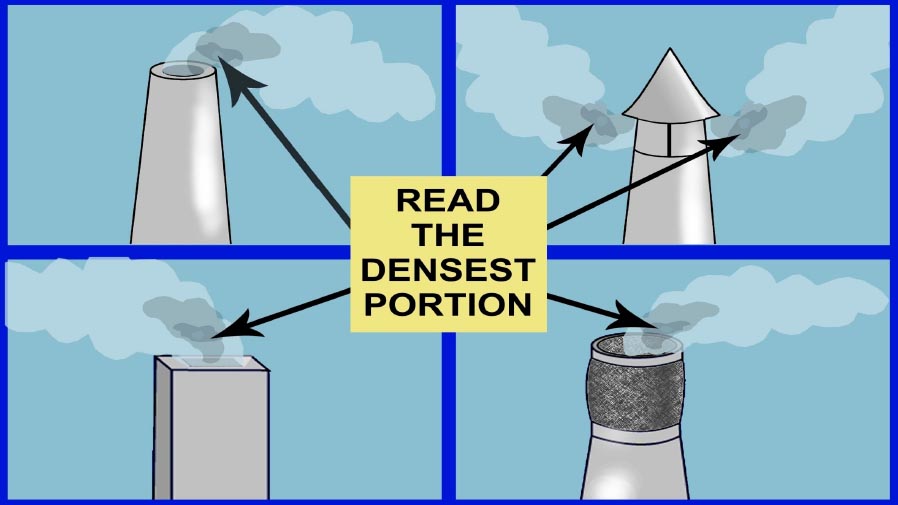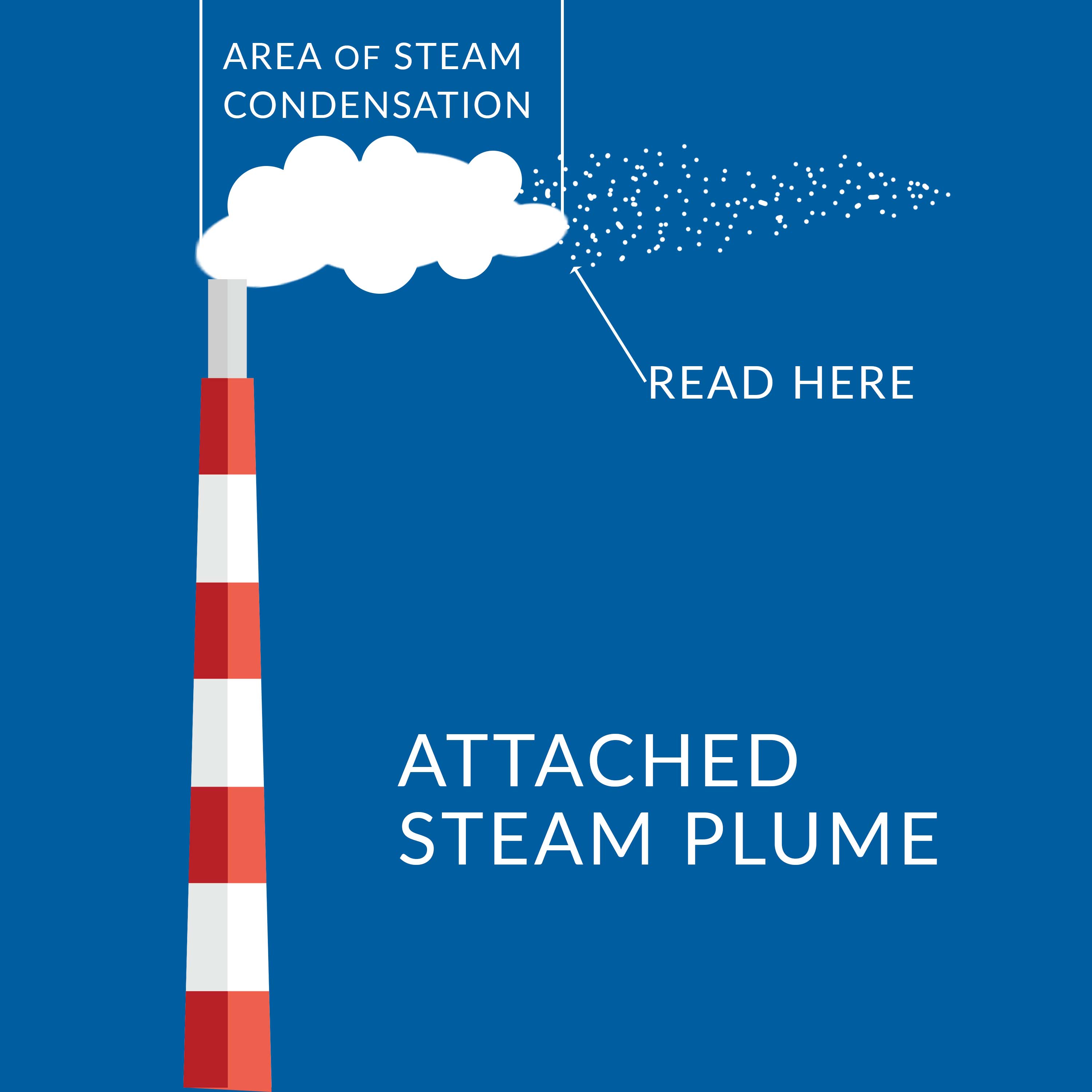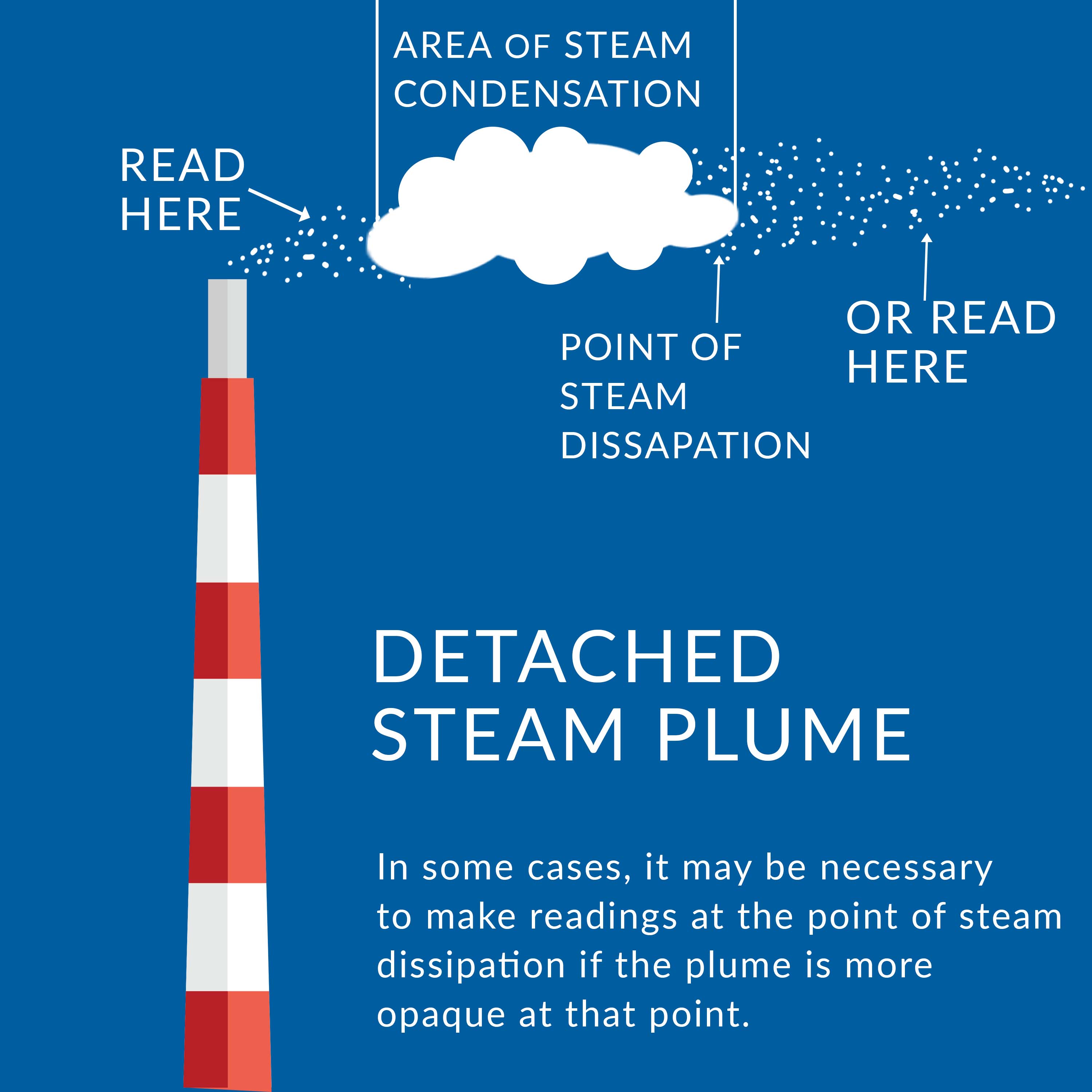Where to Read a Smoke Plume for Method 9
Excerpt from Online Visible Emissions Course
Return to VEO course summary page »



Determine the Point on the Plume
Visible emissions observations should be read at the point of the plume where the opacity is the greatest. Method 9 states that Opacity observations shall be made at the point of greatest opacity in the portion of the plume where condensed water vapor is not present.
When Water Vapor or Steam Are Not Present
When a plume does not have water vapor or steam, finding the point to read is simple, read at the point of the densest smoke.
Steam Plumes - When Water Vapor is Present
Water vapor plumes are not considered emissions and should be excluded from observation data when performing a reading. Vapor plumes usually appear very white and billowy, with mottling and shadowing, like a cloud, transitioning to thin and wispy at the point of dissipation.
Steam plumes contain liquid vapor which can affect how opacity is discerned. There are two type of steam plumes:
When steam is present at the point emerges from the emission outlet, it is an attached steam plume. Observations must be made beyond the point where the steam is no longer visible. You must document the distance and direction from the emission point to the observation point.
Method 9 states: When condensed water vapor is present within the plume as it emerges from the emission outlet, opacity observations shall be made beyond the point in the plume at which condensed water vapor is no longer visible. The observer shall record the approximate distance from the emission outlet to the point in the plume at which the observations are made.
Source: EPA Field Manual
When steam condenses at a distinct distance from the emission outlet, it is a detached steam plume. The opacity of the emissions should be evaluated at the emission source prior to the condensation of the steam plume. Remember to select the densest part of the plume.
Method 9 states: When water vapor in the plume condenses and becomes visible at a distinct distance from the emission outlet, the opacity of emissions should be evaluated at the emission outlet prior to the condensation of water vapor and the formation of the steam plume.
Source: EPA Field Manual


